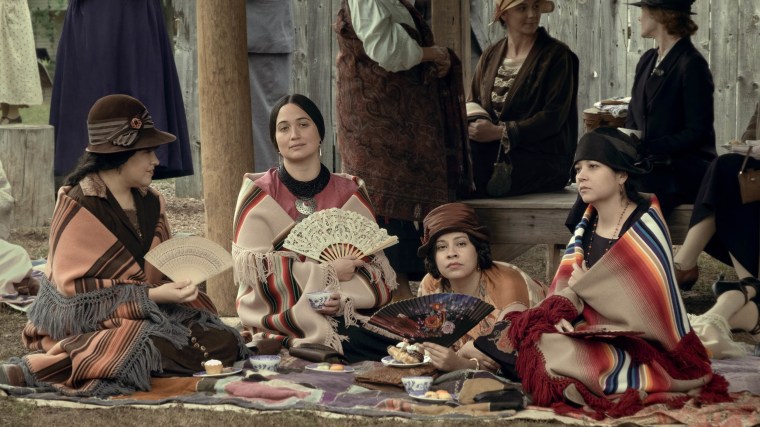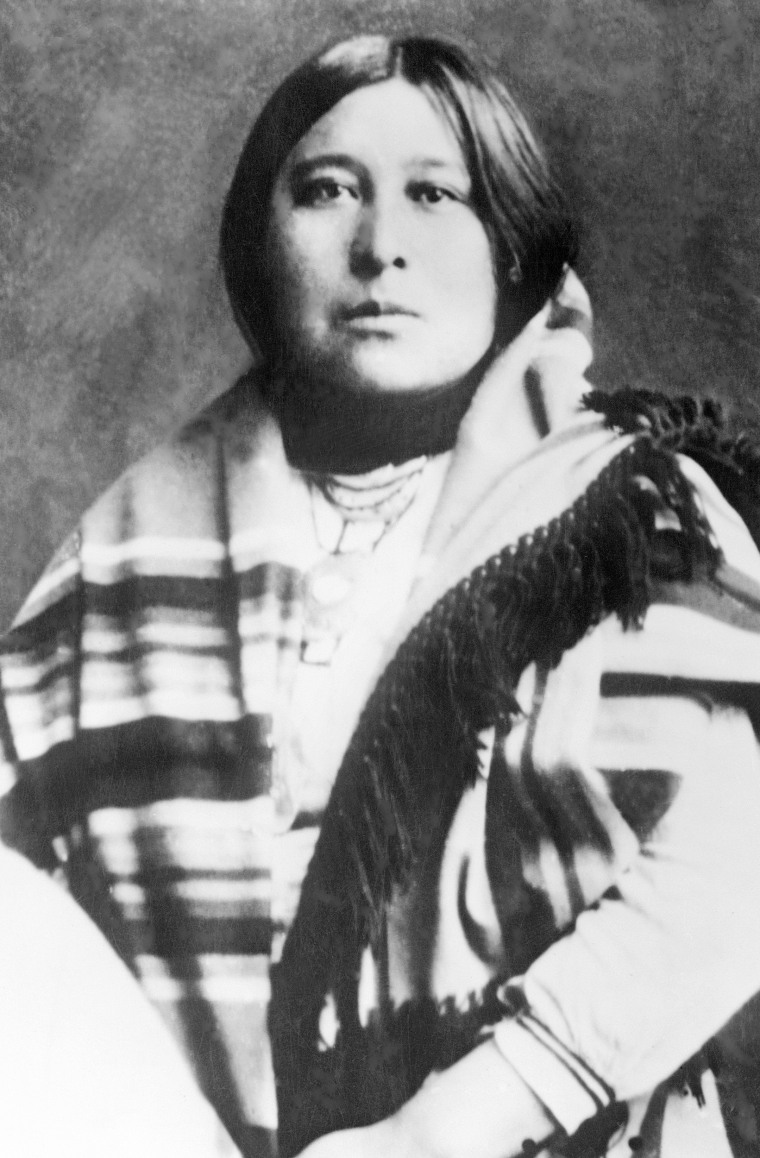"The Killers of the Flower Moon" re-examines the Reign of Terror period for the Osage Nation during the 1920s, featuring the people affected by the slayings — and the perpetrators.
In the film, actor Lily Gladstone portrays Mollie Burkhart, a real member of the Osage Nation whose mother, sisters and other family members were killed over their headrights, or rights to oil reserves found underneath their reservation in Oklahoma.
Gladstone, who spent her early childhood on the Blackfeet reservation in Montana, made history when she won the Golden Globe for best actress in a motion picture drama on Jan. 7, as she became the first Indigenous person to win the award.
She spoke in Blackfeet language at the beginning of her acceptance speech as she took in the historic nature of the moment.
"I’m so grateful that I can speak even a little bit of my language, which I’m not fluent in, up here. Because in this business, Native actors used to speak their lines in English and then the sound mixers would run them backwards to accomplish Native languages on camera," she said.
Who was Gladstone's character, and what happened to her family? Read on for the true story behind "The Killers of the Flower Moon," which becomes available to stream on Apple TV on Jan. 12.

Who was Mollie Burkhart?
Mollie became a wealthy member of the Osage Nation once oil was discovered underneath their reservation, as she retained the head rights to the oil, according to interviews, records and documents in David Grann's book "Killers of the Flower Moon," which director Martin Scorsese based his film of the same name on.
Mollie later meets Ernest Burkhart, her chauffeur, and falls in love. The pair married in 1917, and had three children: Elizabeth, Anna, and James, also known as Cowboy.
But as the film depicts, Ernest had ulterior motives for the marriage — his uncle William Hale, a beloved member of the community with contacts throughout every aspect of the town, proposed a plan for Ernest to marry Mollie so that he would inherit her headrights when she died, and therefore her vast wealth.
Shortly after their marriage, Mollie's mother and three sisters began dying in mysterious deaths, including an execution-style slaying, a bombing and apparent poisonings, according to Grann's book.
Then Mollie, a diabetic, began to become ill herself. As depicted in the film, she was slowly being poisoned through her insulin shots, Grann reported. Once she was taken to a local hospital and taken out of the care of her doctors, she recovered.
"It is an established fact that when she was removed from the control of Burkhart and Hale, she immediately regained her health," an FBI agent wrote in a 1954 report, according to Grann's book.
She was well enough to attend her husband's murder trial, where he had pleaded not guilty to ordering the bombing that killed Mollie’s sister Rita and her husband Bill Smith, according to Grann’s book.
In the middle of the trial, the Burkhart's youngest daughter Anna became seriously ill and died, according to Grann's book. Doctors attributed her death to illness and found no evidence of foul play, Grann wrote.
A few days after Anna's death, Ernest changed his plea to guilty and was later sentenced to life in prison.
"Before being led away in irons to the state petitionary, Burkhart turned and smiled wanly at Mollie. But her expression remained impassive, perhaps even cold," Grann wrote.

Mollie also was present for Hale's trial, where he was convicted of murdering her cousin Henry Roan and later sentenced to life in prison, and she attended Kelsie Morrison's trial, where he was convicted of murdering her sister Anna Brown, according to Grann's book.
During the trials, witnesses corroborated that her husband had been there comforting Mollie after her sister's death, though he knew who had killed Anna. Witnesses also testified that Ernest knew who was responsible for the bombing of her sister and brother-in-law Rita and Bill Smith, even as she desperately searched for the killers.
"By the time Morrison was convicted of Anna's murder, Mollie could no longer look at Ernest. She divorced him, and whenever her husband's name was mentioned she recoiled in horror," Grann wrote.
What happened to Mollie Burkhart after the trial?
Following the trials, Mollie began to socialize and attend church again, and fell in love with a man named John Cobb, whom she married in 1928.
Three years later in 1931, a court ordered Mollie was no longer a ward of the state, meaning she would no longer need a guardian to sign off on how she spent her money.
"At 44, Mollie could finally spend her money as she pleased, and was recognized as a full-fledged American citizen," Grann wrote in his book.
Margie Burkhart, Mollie's granddaughter, told Grann that living on the Osage Reservation with Cobb was a period of happiness for her, and in 1937, Mollie died at the age of 50.
As read by Scorsese during a cameo in the film, Mollie's short obituary stated: "Mrs. Mollie Cobb, 50 years of age... passed away at 11 o'clock Wednesday night at her home. She had been ill for some time. She was a full-blood Osage."
Later that same year, Ernest Burkhart was paroled, and he was later pardoned and allowed to return to Oklahoma, where he lived in a "mice-infested trailer just outside Osage county," according to Grann's book. He died in 1986.
After serving 20 years in prison, Hale was released from prison in 1947, and he died in an Arizona nursing home in 1962, according to Grann's book.
